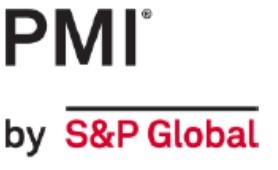The Global Purchasing Managers’ Index (PMI) for manufacturing produced by J P Morgan using the data from S&P Global edged down again with the reading of 48.6 the 4th in a row to be below the crucial 50 level. Although output fell at a slightly slower rate, this was outweighed by an acceleration in the decline for orders. Excluding the pandemic period, this is the lowest reading since the first half of 2009 in the financial crisis. All of the sub-sectors were similarly affected, although the downturn is sharpest for the intermediate goods industry and there was a small increase in output for both investment and consumer goods makers.
The UK recorded a more substantial fall in its manufacturing PMI at 45.3; although this was slightly better than the flash estimate, this is still the lowest level for 31 months and, like the global series, the lowest since 2009 if the pandemic months are excluded. All of the elements of the PMI calculation indicated a weaker position for the UK economy with output, new orders, employment and stocks of purchases falling at accelerating rates while suppliers delivery times were extended at the least extent since January 2020. In another parallel with the global report, the intermediate goods industry was the worst affected; there is a little good news with both output and new orders for the investment goods industry increasing in December (seasonally adjusted) although the general economic malaise threatens to overwhelm the sub-sector as we go into 2023.
In the Euro-zone, while the overall index and those for all of the eight countries in the region covered by the survey remain below 50 (and, therefore, indicating contraction in activity for the manufacturing sector), all except Greece had a higher reading than in November. For the Euro-zone as a whole, this was 47.8, its highest since September and the output element was at a 6-month high. As with the global and UK trends, there was even a marginal improvement for the investment goods industries.
We saw a similar trend elsewhere in the EU with the Czech Republic and Poland improving compared to November, with Sweden unchanged, although all three are still in negative territory – indeed, Czechia has the lowest manufacturing PMI in our report at 42.6. The exception to this trend is Hungary which is often quite volatile and saw an increase of 7.1 points to 63.1 in December – this makes it both the strongest overall reading and the largest growth compared to November among the countries/regions that we monitor.
Elsewhere in Europe, both Switzerland and Russia continue to have a positive PMI while Turkey, despite a significant improvement compared to November, is still below the crucial 50 level.
In Asia, we have a mix of trends although China, Japan, South Korea and Taiwan all remain in contraction mode – the latter despite a strong increase remains among the weakest readings globally at 44.6. The ASEAN countries as a group saw a small deterioration but were just above 50, while India remains the “star in the East” with an improved PMI reading of 57.8 for the end of 2022.
Finally, in the Americas, the USA saw the sharpest fall in its manufacturing PMI across our analysis – the December reading was 46.2 which is 1.5 points lower than in November. This was driven by an acceleration in the pace of decline for both output and new orders. Elsewhere in the region, both Canada and, to a lesser extent, Brazil saw a more negative PMI reading but Mexico had a small improvement in its already positive value.
Overall in our analysis, only Hungary, India, Switzerland, Russia, Mexico and the ASEAN group had manufacturing PMI’s above 50 in December.
The individual S&P Global PMI reports are available to download on their web-site at https://www.pmi.spglobal.com/Public/Release/PressReleases but we also have a summary charts report which is available to download below. You should note that the PMI readings for Hungary, Sweden and Switzerland are not compiled by S&P Global but can be found with an appropriate internet search (it also means that they are not part of the global PMI calculation).

